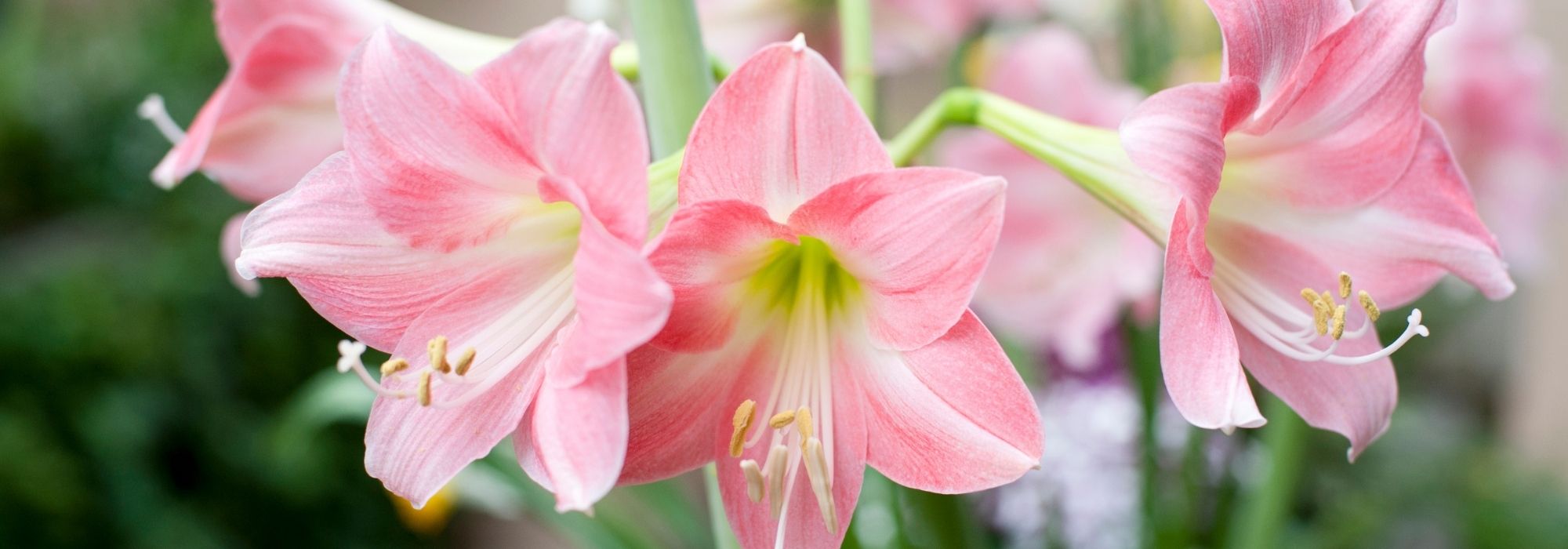
Amaryllis: growing, planting and care
Contents
Amaryllis in a nutshell
- It is a majestic indoor bulb plant with a lofty beauty
- A true festive flower, the Amaryllis blooms in the heart of winter with large red flowers, as well as white, apricot, or pink
- It will be ideal for flowering your home indoors at Christmas
- When cut, the flowers will make beautiful cut flower arrangements
- Not very hardy, it is rarely grown outdoors in the ground, more commonly in pots to protect it from frost
A word from our expert
The amaryllis is a tall bulbous plant, valued for its spectacular flowers, majestically perched atop a tall flower stem. In Greek, the amaryllis flower means “sparkling” and “twinkling,” a euphemism for this plant that inspires such admiration.
Frost-sensitive and susceptible to cold, it is primarily grown indoors, although it can be cultivated in the garden in certain regions against a well-exposed wall, sheltered from cold winds. The amaryllis from the Hippeastrum family, which are not at all hardy and intended for indoor cultivation, can be distinguished from Amaryllis Belladonna, which are slightly more hardy and can be planted outdoors in the ground only in regions with a mild climate.
A quintessential festive flower, the Amaryllis Hippeastrum is a valuable plant for brightening our homes for Christmas and even into spring. Alongside the traditional red amaryllis, this flower now comes in a wide range of colours and shapes, offering soft, fresh, vibrant, or contrasting tones. Perfect for creating sophisticated, exotic, minimalist, or simply natural indoor displays.
Therefore, it is in winter, warm at home, that you will enjoy its flowering the most: 6 to 10 weeks after planting, the flowers bloom, beautifully presented for viewing. To see it bloom at Christmas, remember to plant it at the beginning of October. Plant amaryllis bulbs with a two-week interval to extend the flowering period throughout winter.
Discover our unique collection of amaryllis; they will bring a touch of warmth and a lot of elegance to your home in the depths of winter!
→ And for everything you need to know about amaryllis, visit our blog
→ Also, check out our growing and care tips to see it bloom at Christmas in your home and to make it bloom again!
Botany
“`html
Botanical data
- Latin name Amaryllis Hippeastrum and Amaryllis belladonna
- Family Amaryllidaceae
- Common name Amaryllis
- Flowering January to April, October to December
- Height 50-60 cm
- Exposure sun
- Soil type well-drained
- Hardiness frost-sensitive
Amaryllis is a bulbous plant native to the tropical regions of South America, belonging to the Amaryllidaceae family, like lilies. Frost-sensitive, it is mainly grown indoors to bloom at Christmas and should not be confused with l‘Amaryllis belladonna, from the Amaryllis genus, which is a hardier perennial that can be grown outdoors in regions with a mild climate. The name Amaryllis has been retained for both genera, and the bulbs marketed as “amaryllis” are generally cultivars of Hippeastrum. The Hippeastrum genus includes numerous hybrid varieties with flowers in an infinite array of colours and shapes, sometimes extravagant.
This upright bulbous plant develops from a single bulb. As with all types of bulbs, they are classified by size: the larger the bulb, the more flowers it will produce; the largest bulbs, size 34+ or 36+, will develop 2 to 3 flower stems. The plant forms a clump 40 to 60 cm tall in bloom and 30 cm wide, depending on the varieties. Its growth is extremely rapid; flowers bloom 6 to 10 weeks after planting.
After or simultaneously with the appearance of the flowers, the bulb produces a tuft of basal leaves that are long, broad, ribbon-like, and a shiny medium green, measuring up to 50 cm.
Amaryllis is a valuable plant for brightening our interiors throughout winter, from December to April, especially at Christmas for forced bulbs. Amaryllis belladonna blooms later, in September and October.
The flowering is always elegant and graceful. The round, robust, hollow, smooth, leafless flower stems emerge from this tuft. They bear at their tips majestic inflorescences, with 3 to 7 remarkable corollas depending on the variety, (5 to 15 smaller and slightly fragrant flowers in the Belladonna Lily) shaped like trumpets or funnels, 12 to 20 cm in diameter for the giant flowers. They are generally grouped in fours at the top of the main stem and positioned back-to-back. Their shape varies by variety; the flowers can be single, double, known as “butterfly”, sometimes very sophisticated and stylised like those in the amaryllis cybister category.
These high-set corollas consist of rounded or tapered tepals, arranged in a staggered pattern and joined at the base to form a tube, reminiscent of lilies. They have a thick, fleshy texture and release a bouquet of long stamens.
 Various shapes and colours of flowers
Various shapes and colours of flowers
Alongside the traditional bright red amaryllis, amaryllis flowers now come in a wide range of colours, from vivid to subtle, including white, salmon, pink, solid, spotted, or striated with contrasting stripes, sometimes taking on very exotic or slightly artificial appearances.
The flowering lasts 3 to 4 weeks. Amaryllis flowers make beautiful bouquets or floral arrangements that are highly sought after. Once cut, they last about a week in a vase.
“`
Main species and varieties
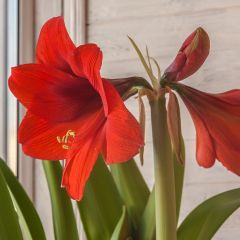
Hippeastrum Red Lion - Amaryllis
- Height at maturity 50 cm
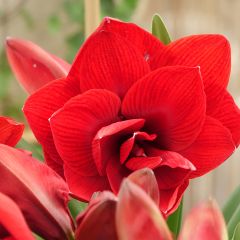
Hippeastrum Double Dragon - Amarylis
- Height at maturity 55 cm
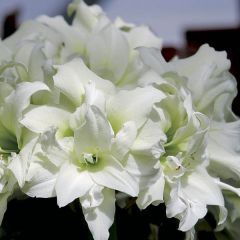
Hippeastrum Ice Queen - Amaryllis
- Height at maturity 50 cm
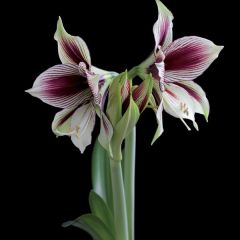
Hippeastrum Papilio - Amaryllis
- Height at maturity 50 cm
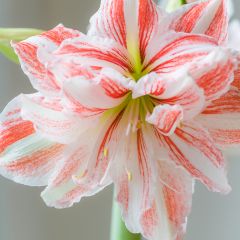
Hippeastrum Nymph - Amaryllis
- Height at maturity 50 cm
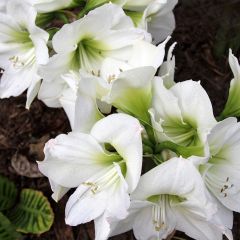
Hippeastrum Christmas Gift - Amaryllis
- Height at maturity 50 cm
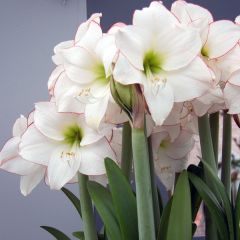
Hippeastrum Picotee - Amaryllis
- Height at maturity 50 cm
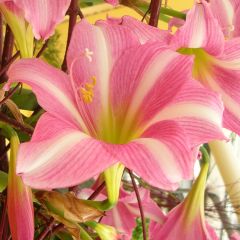
Hippeastrum Estella
- Height at maturity 70 cm
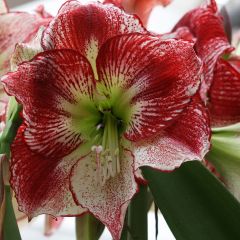
Hippeastrum Flamenco Queen - Amaryllis
- Height at maturity 50 cm
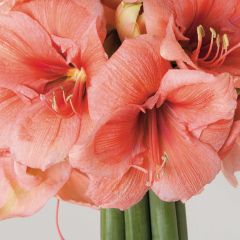
Hippeastrum Rilona - Amaryllis
- Height at maturity 50 cm
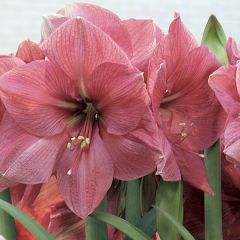
Hippeastrum Hercule - Amaryllis
- Height at maturity 50 cm

Hippeastrum Evergreen - Amaryllis
- Height at maturity 50 cm
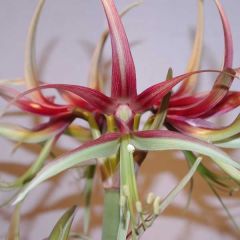
Hippeastrum Chico - Amaryllis
- Height at maturity 50 cm
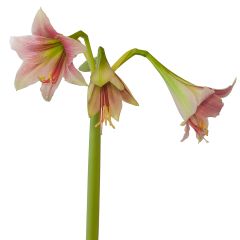
Hippeastrum Exotic Star - Amaryllis
- Height at maturity 50 cm
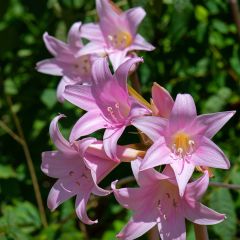
Amaryllis belladonna
- Flowering time October, November
- Height at maturity 60 cm
Discover other Indoor bulbs
View all →Available in 1 sizes
Available in 1 sizes
Available in 1 sizes
Available in 1 sizes
Available in 1 sizes
Available in 1 sizes
Available in 1 sizes
Available in 1 sizes
Available in 1 sizes
Available in 1 sizes
Planting Amaryllis
Where to plant it?
Too frost-sensitive to be planted outdoors in most of our regions, Amaryllis (Hippeastrum) is primarily grown in pots: it is a bulbous plant for indoor cultivation. Most amaryllis cannot withstand frost, even light. However, Belladonna Lily has low hardiness (down to -5°C), making its cultivation possible in the garden, in light, cool, well-drained, humus-bearing soil, but only in our mildest regions.
When to plant it?
The planting period for Amaryllis bulbs (Hippeastrum) varies depending on the desired flowering time, from late September to late April. Plant them in October to see them bloom at Christmas in your home. Amaryllis Belladonna is planted in spring, after the last frosts.
How to plant it?
The substrate must be light and well-drained as the bulb is sensitive to excess water. The bulb should be healthy, free from mould spots, and firm. Prefer larger bulbs, 30+ at a minimum, which bloom well.
In pots
- Choose a well-drained pot that is not too light, at least 30 cm high and 20 cm in diameter (3 to 5 cm wider than the bulb size)
- Trim the ends of the roots with pruning shears
- Spread a layer of drainage (a bed of clay balls, perlite, or gravel) at the bottom of the pot
- Plant the bulb at soil level, burying it only a third to half in a mixture of half potting soil and half garden soil or in a special flowering plant potting mix
- Firm it down well
- Water sparingly until the stem appears, then water daily
- To accelerate flowering, place the pot in a warm, bright spot, around 20°C, for example, near a radiator and a window
- Be patient: 6 to 8 weeks later, you will see the first flowers appear! If you want to slow down flowering, place the pot in a cool spot at 10°C.
Our advice: plant several bulbs at two-week intervals to enjoy continuous blooms from Christmas to spring.
Note: It is also possible to plant them individually in specific vases or carafes: the water must not come into contact with the bulb to avoid rotting.
→ Discover our article: “Planting an amaryllis in a pot for indoors”
In the ground
In the rare regions where its cultivation in the ground is possible, such as the Mediterranean coast:
- Choose a well-sunny spot sheltered from the cold
- Plant the bulbs 15 to 20 cm deep, spaced 25 to 30 cm apart
- Place the bulbs, collar facing up and flush with the surface, allowing them to protrude almost half their height
- Fill in with a mixture made up of equal parts garden soil, potting soil, and sand
- Firm down and water
→ Also read our tutorial: How to plant Amaryllis?
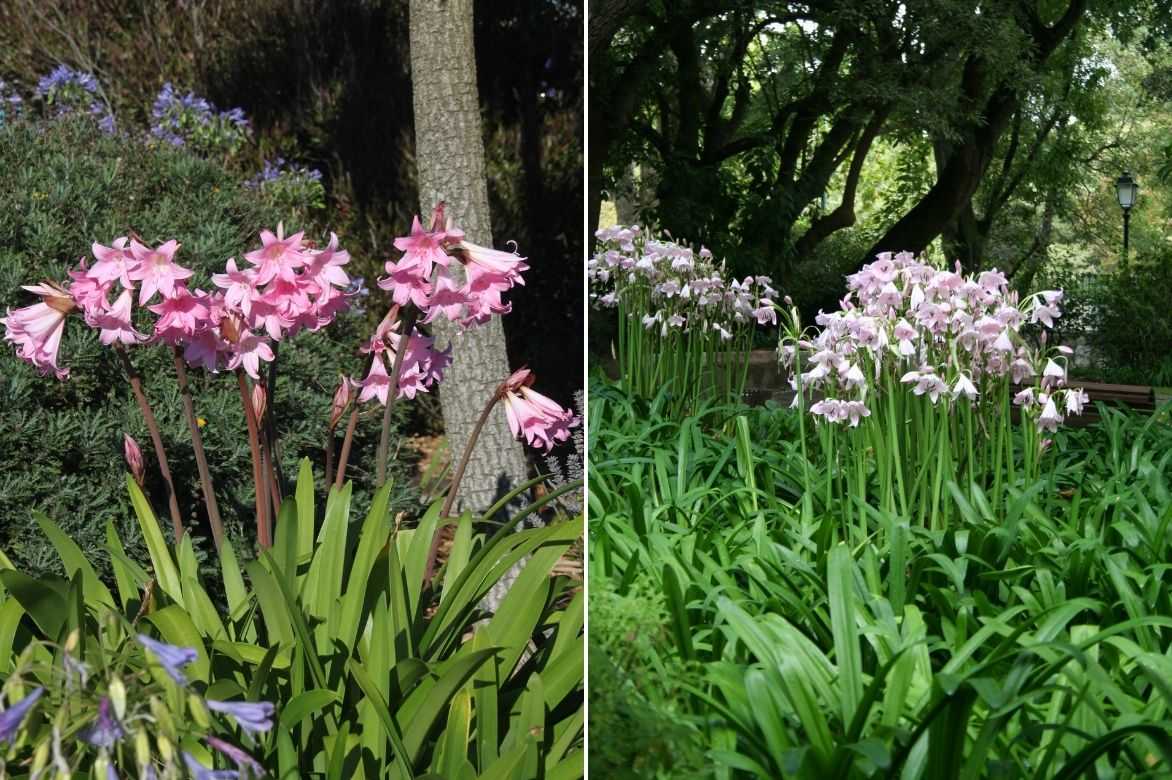 Amaryllis belladonna in a garden in Finistère (Brittany, France) and in the Estrela garden in Lisbon
Amaryllis belladonna in a garden in Finistère (Brittany, France) and in the Estrela garden in Lisbon
Read also
How to make an amaryllis bloom again?Cultivation and care of the amaryllis
In pots
During growth, stake the flower stem of the Amaryllis or regularly turn your pot a quarter turn to keep it upright. Keep the substrate slightly moist. Once the stem starts to emerge, water more regularly, 2 to 3 times a week.
Watering becomes increasingly frequent as your amaryllis grows. Apply flowering plant fertiliser once a week to support flowering.
If you wish to keep your bulb and have it bloom year after year, pruning is necessary. After flowering, cut the faded flowers 2 to 3 cm above the bulb to prevent seed formation.
Allow the foliage to develop and apply flowering plant fertiliser twice a month. This will help the bulb replenish its reserves. Water moderately and avoid letting water stagnate in the saucers. Place your amaryllis in a cooler environment. After flowering, you can also move the amaryllis outdoors once the risk of frost has passed, in a sheltered and shaded spot.
In summer, start to space out watering and fertiliser applications to encourage the foliage to dry completely. Then, in September, let your potted plants rest for at least 3 months, without watering, in a cool place, between 10 and 15 °C and dry. This is the necessary resting period for your amaryllis to bloom again.
After this dormancy period for the bulb, cut the faded leaves. Top up by replacing the first few centimetres of potting soil with fresh compost. Place your pot back in a warm, light location and resume watering. You should see your amaryllis begin a new growth cycle. Do not repot in autumn, from October to December, in fresh compost more than every 3 years and in a slightly larger pot.
To keep your potted amaryllis outdoors, bring them in during winter to a dry, airy place. You can take them out again the following spring once the frost has passed.
→ Check our article: “Amaryllis: how to care for, bloom, and rebloom”
In the ground
In summer, water moderately and apply flowering plant fertiliser every 15 days. In autumn, cut back the yellowing foliage, mulch the bulbs to protect them from frost with a layer of leaves or straw.
Possible diseases
Amaryllis bulbs grown indoors rarely encounter cultivation issues. Like many bulbous plants, they can be sensitive to narcissus fly, which causes degeneration of the bulb and leaves: spray a garlic maceration or a tansy decoction as a preventive measure.
Indoors, amaryllis can be susceptible to attacks from thrips, aphids, and mealybugs. Discover our solutions to combat aphids and mealybugs.
In case of insufficiently drained soil and/or excess water, the bulbs may be affected by grey rot: transplant them into well-draining soil.
Associating
At home, amaryllis thrive on their own in pots. To dress the stems, you can plant a few bulbs of Veltheimia, hyacinths, or snowdrops at their base. Create stunning pot arrangements by collecting pink, red, or white amaryllis and placing them close together.
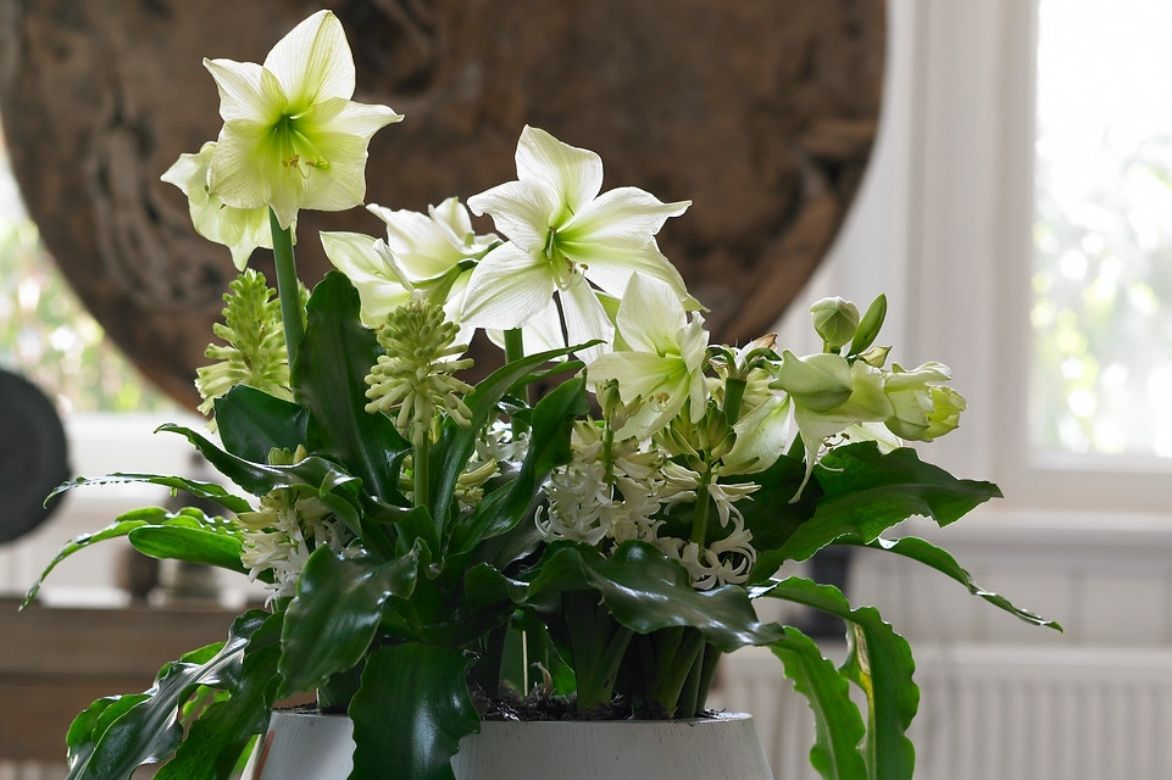 An idea for an arrangement with Veltheimia ‘Lemon Flame’, Amaryllis ‘Lemon Lime’, and some white hyacinths
An idea for an arrangement with Veltheimia ‘Lemon Flame’, Amaryllis ‘Lemon Lime’, and some white hyacinths
In a bed of perennials or late annuals, the hardy Amaryllis Belladonna will accompany crinums, dahlias, gladioli, azaleas, or rhododendrons.
In a bouquet, consider pairing amaryllis flowers with freesias to create exotic and vibrant arrangements.
→ Discover some inspiring display ideas in our article “Outdated, Amaryllis? 4 settings that prove it’s not!”
Useful resources
-
- Article: Bulb sizes: understanding to choose better
- Article: Amaryllis: the best varieties
- Article: Planting an Amaryllis in a pot for indoors
- Article: Amaryllis: how to care for, bloom, and rebloom
- Article by Ingrid: My Amaryllis isn’t blooming. What to do?
- Article by Ingrid: Outdated, the Amaryllis? 4 settings that prove otherwise!
- Our tutorial: Growing an Amaryllis with children
- Our quirky article: How to spectacularly fail at growing Amaryllis?
- Subscribe!
- Contents
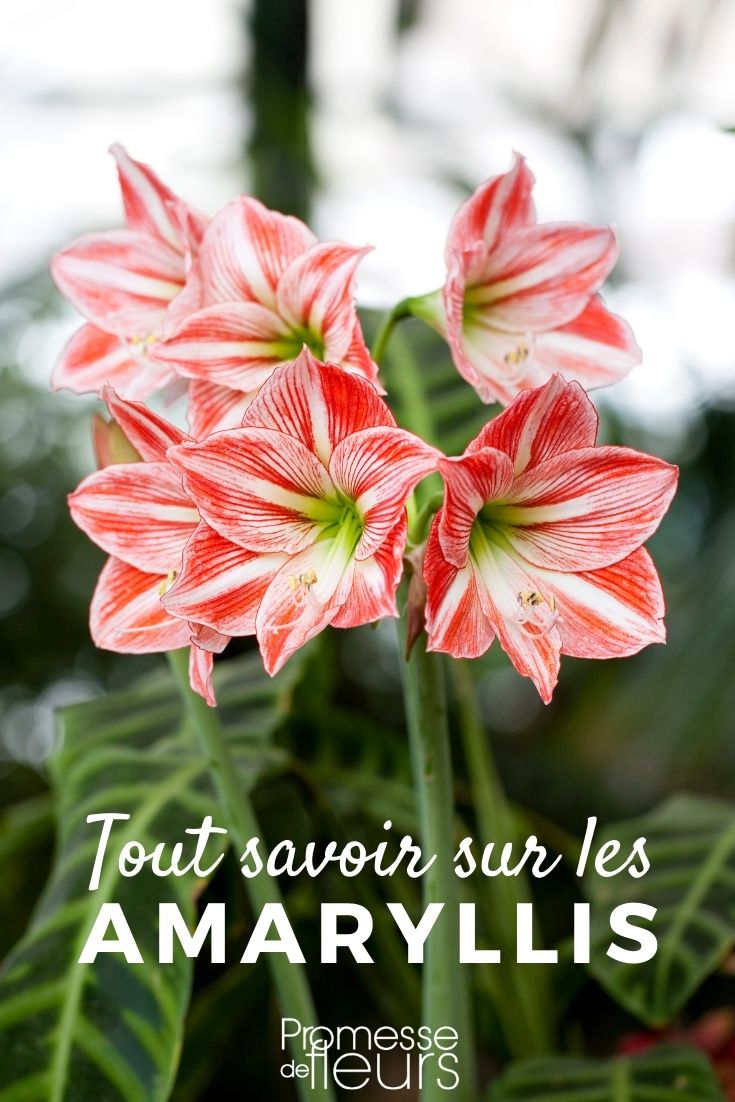































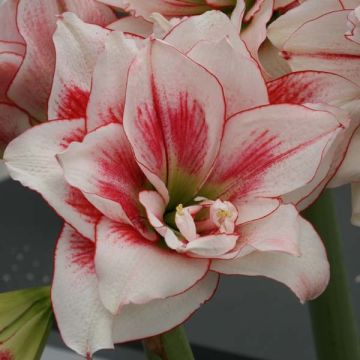
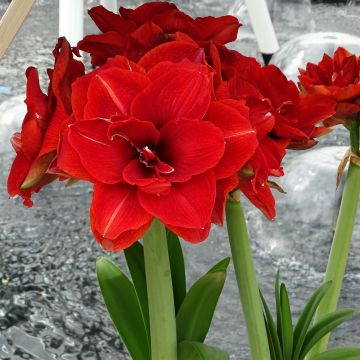
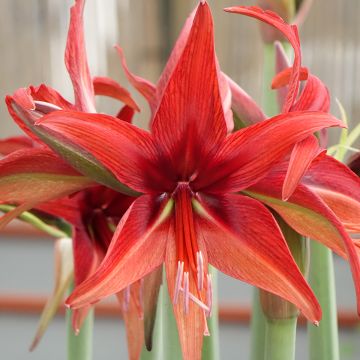


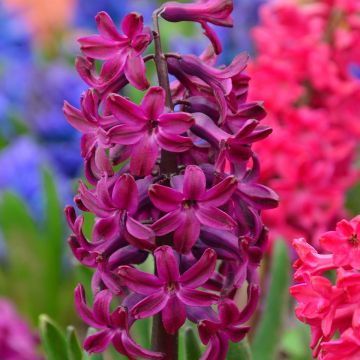
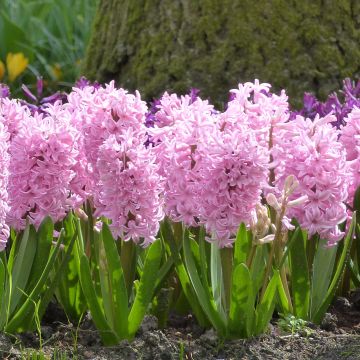


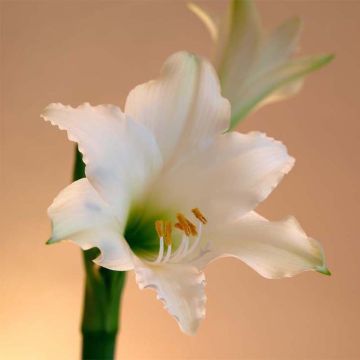
Comments